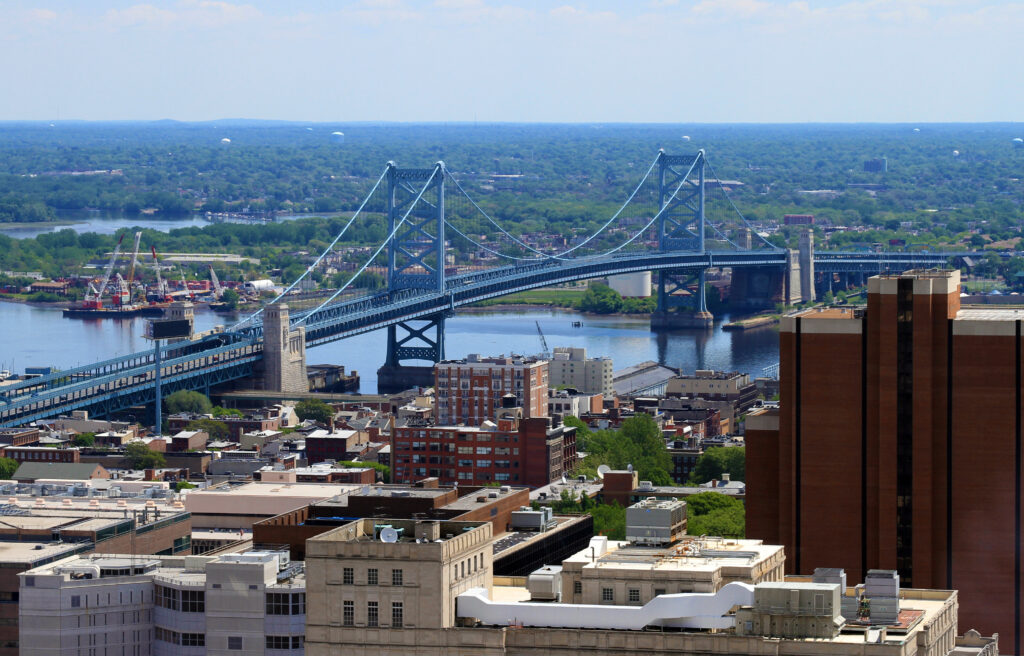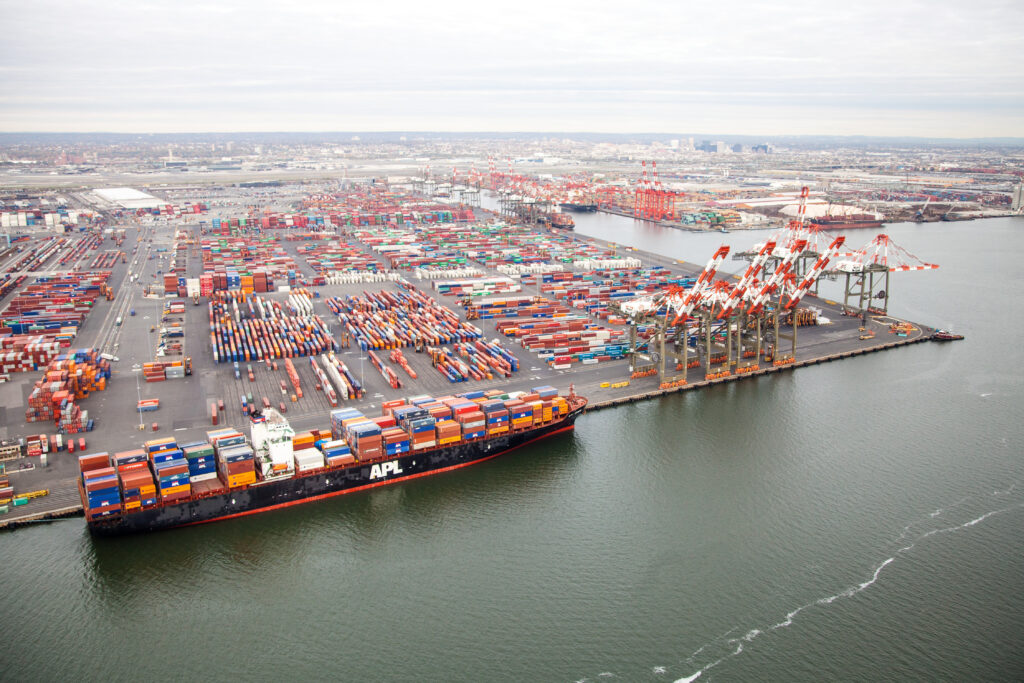Ports
Our N.J. ports are a hub of commerce and require diesel power to operate the ships, tugboats, cranes, trucks, trains, planes and more….learn about the public and private efforts underway to reduce emissions at the ports.
Historically, New Jersey’s low-income communities and communities of color have been subject to a disproportionately high number of environmental and public health stressors, including pollution from numerous industrial, commercial, and governmental facilities located in those communities and, as a result, suffer from increased adverse health effects including, but not limited to, asthma, cancer, elevated blood lead levels, cardiovascular disease, and developmental disorders. View more about Environmental Justice at DEP.

South Jersey Port
The South Jersey Port Corporation (SJPC) is one of the oldest ports in the country and currently includes four terminals: Beckett Street (Camden), Broadway (Camden), Port of Salem and the new Port of Paulsboro (in the design stage).
NJDEP’s Diesel Risk Reduction Program is working with SJPC and its contractor, NESCAUM, to retrofit and re-power cargo handling equipment in Camden. Two cranes, two front-end loaders and two lift trucks have been or are scheduled to be re-powered. Additional equipment will receive retrofit devices. This project is funded with $500,000 of enforcement settlement money.
The Delaware River Port Authority (DRPA), the South Jersey Port Corporation (SJPC), and the Philadelphia Regional Port Authority (PRPA) have launched a Green Ports Initiative to identify strategies that will reduce the environmental impacts and improve the sustainability of their operations.
Learn more about the Green Ports Initiative

Ports of Newark and Elizabeth
The Port Authority of New York and New Jersey, along with its partners, has undertaken a comprehensive effort to inventory sources of diesel emissions and identify strategies to reduce them. The Port Authority is committed to the long-term sustainability of the region while meeting the critical infrastructure needs of New York and New Jersey.
NJDEP has completed its Phase 1 “Estimated Air Quality Impacts on Surrounding Communities of PM2.5 and SO2 Emissions Resulting From Maritime Operations at Elizabeth Port Authority Marine Terminal and Port Newark”. This study uses a computer model to estimate the air quality and health impacts from a variety of diesel emission sources at the Port, using the Port’s inventory of diesel emissions. The Phase 2 report, “Estimated Air Quality Impacts on Surrounding Communities of PM2.5 and SO2 Emissions Resulting From Maritime Operations at the Elizabeth Port Authority Marine Terminal and Port Newark: Phase 2 Future Impacts (2015)” is complete. Phase 3 will estimate the air quality impacts from diesel truck traffic upon several residential areas in the Newark and Elizabeth area.